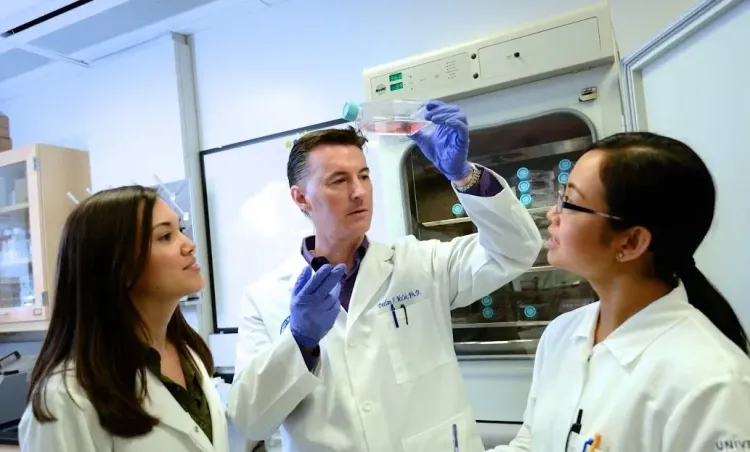Can Inhaling Agricultural Dust Endanger Gut Health?

Synopsis
Key Takeaways
- Agricultural dust inhalation poses risks to gut health.
- Study shows leaky gut is linked to chronic diseases.
- Research highlights the importance of the gut-lung axis.
- Exposure to hog dust alters the gut microbiome.
- Findings call for better health protections for agricultural workers.
New York, July 20 (NationPress) A group of researchers from the United States has discovered that inhaling agricultural dust may significantly jeopardize gut health for individuals working in animal farming.
Headed by Declan McCole, a professor of biomedical sciences at the University of California, Riverside School of Medicine, this research builds on earlier findings indicating that hog farm dust results in airway inflammation.
Published in the Journal of Applied Toxicology, the study revealed that inhaling this dust also modifies the gut microbiome and disrupts intestinal function, which includes an increase in “leaky gut” or intestinal permeability.
Leaky gut is linked to various chronic illnesses, such as inflammatory bowel disease, celiac disease, and type 1 diabetes.
“Exposure to swine farm dust, which is rich in bacteria and endotoxins, led to both airway inflammation and a greater transfer of gut bacterial products into the bloodstream in our mouse models,” stated Melisa Crawford, a former postdoctoral researcher in McCole’s lab and the paper's primary author. “However, what is particularly noteworthy is the influence we observed on the gut microbiome and metabolism.”
During the study, researchers intranasally exposed mice to hog dust extract over three weeks, resulting in a substantial decline in beneficial bacterial species, including Akkermansia muciniphila, Clostridium sp. ASF356, and Lachnospiraceae bacterium.
The research team also noted reduced levels of essential compounds in the mice's gut, such as riboflavin, nicotinic acid, inosine, and leucine — crucial for energy metabolism, immune regulation, and maintaining the gut barrier.
“While most studies have concentrated on the respiratory impacts of farm dust, our findings evidently demonstrate that inhaled pollutants can have widespread effects,” McCole remarked. “This research highlights the significance of evaluating the gut–lung connection when considering the health risks associated with bio-aerosol exposure in agriculture.
The study further reinforces the increasing evidence that pollution from concentrated animal feeding operations can affect multiple organ systems.










